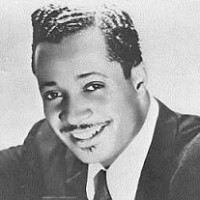Home » Jazz Musicians » Sonny Thompson
Sonny Thompson
Alphonso "Sonny" Thompson was born in Centerville, Mississippi, in August of 1916. As a teenager Thompson moved to Chicago and decided to further his musical education at that city's Conservatory of Music. As a budding pianist he was heavily influenced by the piano players of the time, most importantly Earl Hines and Art Tatum. In his late teens he secured a job playing with Erskine Tate. For a time Thompson attended the University of Chicago, and also had gigs with Red Allen, Stuff Smith, and his own combo called The Rhythm Masters. In late 1942 he enlisted in the army and suffered a serious injury which left him hospitalized for a while and time recuperating at home. He resumed his musical career in late 1944. In the spring of 1945 he landed a top job playing at the Hotel Pershing with a fourteen piece orchestra. The band had broadcast nightly remotes live and that continued for a number of months. In early 1946 he disbanded the orchestra and began to work again as a solo performer. His first session in the recording studio was for a small Detroit label called Sultan Records where he appeared on side of two records released by the label. He then recorded with a combo backing up vocalist June Richmond for Mercury. Sonny finally had success when he recorded for Chicago independent label Miracle Records. In 1948 he recorded "Long Gone" parts one and two on and it became one of the biggest selling R & B records of the forties and Thompson's signature song. In March of 1951 Sonny Thompson keeps the R & B flowing on King with "Smoke Stack Blues" and "Uncle Sam Blues" with vocal by Jesse Edwards. In early August of the year "The Mellow Blues" (parts one and two) is released. It immediately hits the R & B best seller lists in New York and Philadelphia. On the heels of his biggest seller in two years, Sonny Thompson is paired on record with vocalist Lula Reed on the tune "I'll Drown In My Tears" (later covered by Ray Charles) which became the biggest hit for Thompson since "Long Gone". This would be the beginning of a highly successful collaboration that would produce countless top sellers and sold out shows. He continued his association with Lula Reed well into 1959, having had great success both in the recording industry in Miami and Chicago, while fronting a very successful band continuously on tour throughout this time.
Read more





















